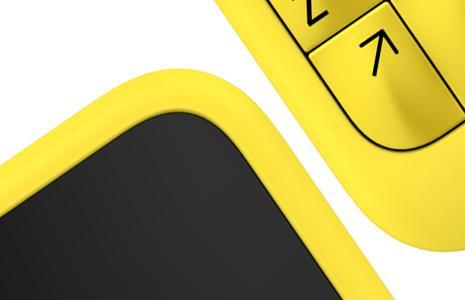
Earlier today, Nokia announced that they'll have something to unveil in a couple of days. Wednesday, April 24, to be exact. The announcement for the future unveil is light on details, as should be expected. After all, we wouldn't want to waste that first announcement to actually announce something of substance! No, no, we need announcements to get pumped about our announcements! (Nokia's obviously not the only company to do this, I'm just giving a general hard time.)
In the image that Nokia *was* nice enough to tag along with the announcement, we can see what looks to be a physical keyboard. It's been a long time since I held a Nokia-branded device with a full, physical QWERTY keyboard, and I distinctly remember my time with one being fairly positive. It wasn't a BlackBerry, no, but it was still pretty dang good. So, I'd be pretty excited to pick up and play with a new physical QWERTY-toting phone from Nokia.
Then I realized that this probably isn't a Windows Phone-based device. As our own Alex Wagner pointed out in his article, it more than likely is an Asha model. That means, based on my daily usage, I won't be able to take advantage of whatever new device Nokia is planning to announce. That is, if it is indeed an Asha device, and not a Windows Phone-based handset.
However, even if we agree that Nokia probably isn't gearing up to announce a new Windows Phone, let's keep talking about Windows Phone, okay? Specifically, let's talk about the hardware.
Verizon Wireless currently has four smartphones running Windows Phone right now. The Samsung ATIV Odyssey, the Windows Phone 8X by HTC, the Nokia Lumia 822, and, oddly, the HTC Trophy. The most expensive of the bunch? The Trophy. But, we can get to that in another article.
AT&T has six Windows Phone-based devices: The Nokia Lumia 920, Lumia 900, and Lumia 820. The Windows Phone 8X by HTC makes an appearance here, too. There's also the Samsung Focus S and the HTC Titan II. Sprint? They aren't selling any Windows Phone devices right now, but that's supposed to be changing soon.
And finally, out of the major wireless carriers here in the U.S., there's T-Mobile. The Magenta carrier has one Windows Phone device available for your purchasing pleasure right now: The Nokia Lumia 810, but only in a refurbished model. Essentially, we're not looking at a huge selection of phones running Microsoft's mobile operating system, but that's not the worst part, if you ask me.
It's the fact that they've all got the same form factor. Nokia's Lumia devices used to be the most colorful and "outlandish" of the bunch, with their unique designs and eye-popping hues, but that's no longer the case thanks to HTC's Windows Phone 8X handsets. And Samsung's ATIV Odyssey? A twist on the Galaxy S III. So, nothing too surprising there, to say the least.

When Sprint did carry a Windows Phone device, it was HTC's Arrive. It was like Verizon's Trophy, but with one big exception: It had a slide-out physical keyboard. I used the Arrive off-and-on for a little while, but after a time I just stopped using the physical keyboard. I phased it out of the process of using the phone, which made it completely pointless to have a phone that thick anymore.
I really stopped using it because when the keyboard was deployed, and the display was now situated horizontally, Windows Phone didn't do anything. It didn't rotate or anything, so I had to keep sliding the keyboard in and out, constantly, if I didn't want to look like a complete fool interacting with my device's touchscreen.
Microsoft has a firm idea of how they think Windows Phone should be interacted with, and there isn't anything wrong with that. They want to keep it vertical, apparently, and I guess that's okay. Though, I'm not sure what's so wrong with a little rotation here and there. But, why aren't manufacturers looking at the "BlackBerry-style" idea for Windows Phone?
There's a practical reason for this, though, so hear me out. With applications tied into the Office brand, like Word and OneNote, why wouldn't you want an easily accessible physical keyboard? Don't get me wrong, the stock Windows Phone software keyboard is good, but that takes up screen real estate. And, with my time on Windows Phone and using apps like Word, I really missed that physical keyboard option on the Arrive. I don't miss that particular form factor, but I do miss the hardware keyboard.
Android can play around with mainly all-touchscreen devices because the software is different. TouchWiz looks different from Sense UI, for example. And LG's software looks different from Motorola's. However, save for some Live Tile placement and color schemes, Windows Phone still looks the same as other Windows Phone devices.
We can't change that, simply because Microsoft has their rules and regulations, but we *can* see some differentiating hardware! Or at least I'd like to hope we can, because all these touchscreen phones are starting to look the same. Different isn't bad! Let's hope, eventually, we start to see Windows Phone manufacturers take a bit more advantage of that in the hardware perspective, since the software is mostly locked down.
But what do you think? Would you ever consider a candybar-styled Windows Phone 8 device? If you have a Windows Phone 8 smartphone, do you miss a physical keyboard at all? Or does the software 'board more than good enough for you? Let me know!